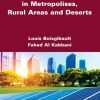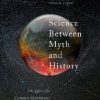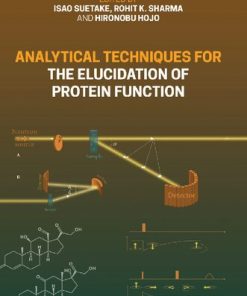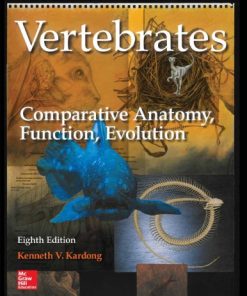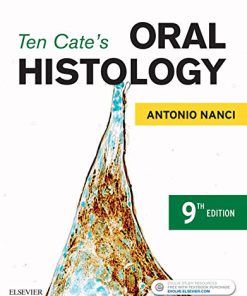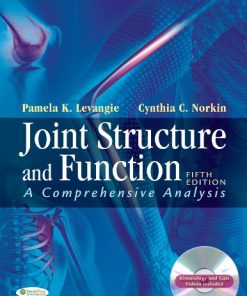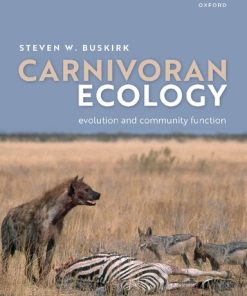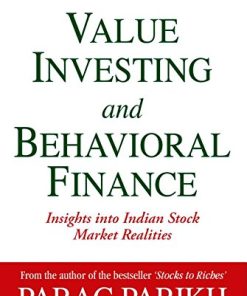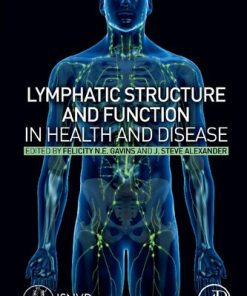Hemoglobin: Insights into protein structure, function, and evolution 1st Edition Jay F. Storz 9780192538765 0192538764
$50.00 Original price was: $50.00.$25.00Current price is: $25.00.
Hemoglobin: Insights into protein structure, function, and evolution 1st Edition Jay F. Storz – Ebook Instant Download/Delivery ISBN(s): 9780198810681,9780198810698,0198810687,0198810695,2018950707,9780192538765,0192538764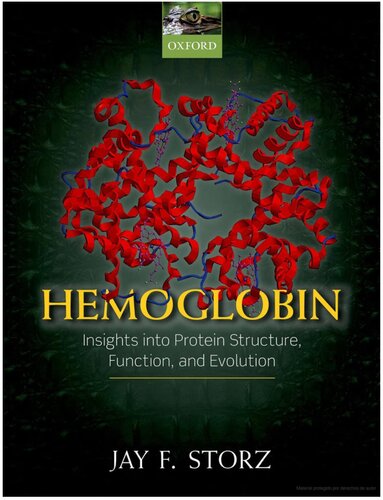
Product details:
- ISBN 10: 0192538764
- ISBN 13: 9780192538765
- Author: Jay F. Storz
The primary aim of this book is to provide a synthesis of our current understanding of hemoglobin function and evolution, and to illustrate how research on one particular family of proteins has provided general insights into mechanisms of protein evolution and biochemical adaptation. In doing so, it will also promote an appreciation of how mechanistic insights into protein function can enrich our understanding of how evolution works. Reciprocally, it highlights how approaches in evolutionary genetics (such as phylogenetic comparative methods and ancestral sequence reconstruction) can be brought to bear on questions about the functional evolution of proteins. This treatise on the functional evolution of hemoglobin illustrates how research on a single, well-chosen model system can enhance our investigative acuity and bring key conceptual questions into especially sharp focus.
Table contents:
Chapter 1: Principles of protein structure
1.1 Introduction
1.2 The hierarchy of protein structure
1.3 The peptide bond
1.4 Folded proteins are mainly stabilized by weak, non-covalent interactions
1.5 The physicochemical properties of amino acids: consequences for protein folding and function
1.6 Secondary structure
1.7 Tertiary structure
1.8 Quaternary structure
Chapter 2: A study in scarlet: The role of hemoglobin in blood gas transport
2.1 Hemoglobin, the O2 -transport protein
2.2 The O2-transport cascade
2.3 Convective O2 transport by the cardiovascular system
2.4 Hb-O2 transport as a key innovation in vertebrate evolution
2.5 The limits of tracheal respiration: lessons from giant insects
2.6 To have and have not: the curious case of the bloodless icefish
2.7 The physiological significance of cooperative O2 binding
2.8 The Hill equation as a phenomenological description of Hb-O2 equilibria
2.9 Hill plots: graphical evaluation of model parameters
2.10 The O2 -equilibrium curve as a graphical expression of the Fick principle
2.11 Cooperative effects of Hb are explained by oxygenation-linked shifts in quaternary structure
2.12 Physiological significance of the Bohr effect for respiratory gas transport
2.13 Organic phosphates as allosteric modulators of Hb-O2 affinity
2.14 The role of Hb in regulating local blood flow
Chapter 3: Allosteric theory
3.1 Homotropic and heterotropic allostery
3.2 Hb as a model allosteric protein
3.3 The Adair equation
3.4 Asymptotes of the Hill plot
3.5 Models of allostery
3.6 Experimental tests of theoretical predictions
Chapter 4: Hemoglobin structure and allosteric mechanism
4.1 Max Perutz, X-ray crystallography, and the origins of structural biology
4.2 Tertiary structure: the globin fold
4.3 Quaternary structure
4.4.3 The T-state is stabilized by a network of salt bridges that break in the T→R transition
4.5 Reconciling Perutz’s stereochemical model with allosteric theory
4.6 The structural basis of heterotropic effects: the binding of allosteric ligands
Chapter 5: Evolution of the vertebrate globin gene family
5.1 Gene duplication and the evolution of novel protein functions
5.2 Phylogenetic insights into gene family evolution
5.3 The ancient history of the globin superfamily
5.4 The diversity of animal globins and the repurposing of ancestral functions
5.5 The full repertoire of vertebrate globins
5.6 Origins of vertebrate globins
5.7 Gene duplication, genome duplication, and the origin of Hb as an O 2 carrier
5.8 Whole-genome duplication and the functional diversification of vertebrate globins
5.9 Mechanisms of gene family evolution
5.9.3 Formation of chimeric fusion genes
5.10 Future directions in the survey of globin diversity
Chapter 6: Gene duplication and hemoglobin isoform differentiation
6.1 Developmental regulation of Hb synthesis
6.2 Evolution of developmentally regulated Hb synthesis
6.3 Fetal Hb and placental gas exchange
6.4 Functional differentiation between larval and adult isoHbs in aquatic ectotherms
6.5 Functional properties of embryonic Hbs
6.6 Functional differentiation of coexpressed isoHbs
Chapter 8: Biochemical adaptation to environmental hypoxia
8.1 Challenges to respiratory gas transport under hypoxia
8.2 Changes in Hb-O 2 affinity
8.3 Is it physiologically advantageous to have an increased Hb-O2 affinity under conditions of envir
8.4 Insights from comparative studies
8.5 Regulation of blood O2 capacitance in vivo
8.6 Conclusion
Chapter 9: Darwin’s molecule: Evolutionary insights into mechanisms of biochemical adaptation and
9.1 Hb paradigms in molecular medicine and biochemical adaptation
9.2 Key questions and conceptual issues in protein evolution
9.3 Intramolecular epistasis
9.4 Testing for evidence of adaptive molecular convergence and parallelism
9.5 Evolutionary lessons
9.6 Conclusion and future directions
People also search:
hemoglobin barts
hemoglobin blood test high
hemoglobin blood test meaning
hemoglobin blood test normal range
hemoglobin below 7
You may also like…
Uncategorized
Analytical Techniques for the Elucidation of Protein Function 1st Edition Isao Suetake
Biology and other natural sciences - Biology
Uncategorized
Ten Cate’s Oral Histology: Development, Structure, and Function 9th Edition – Ebook PDF Version
Biology and other natural sciences - Ecology
Carnivoran Ecology : The Evolution and Function of Communities Steven W. Buskirk
Business & Economics - Investing
Biology and other natural sciences
Carnivoran Ecology: The Evolution and Function of Communities Steven W. Buskirk
Medicine - Clinical Medicine
Lymphatic Structure and Function in Health and Disease 1st Edition


